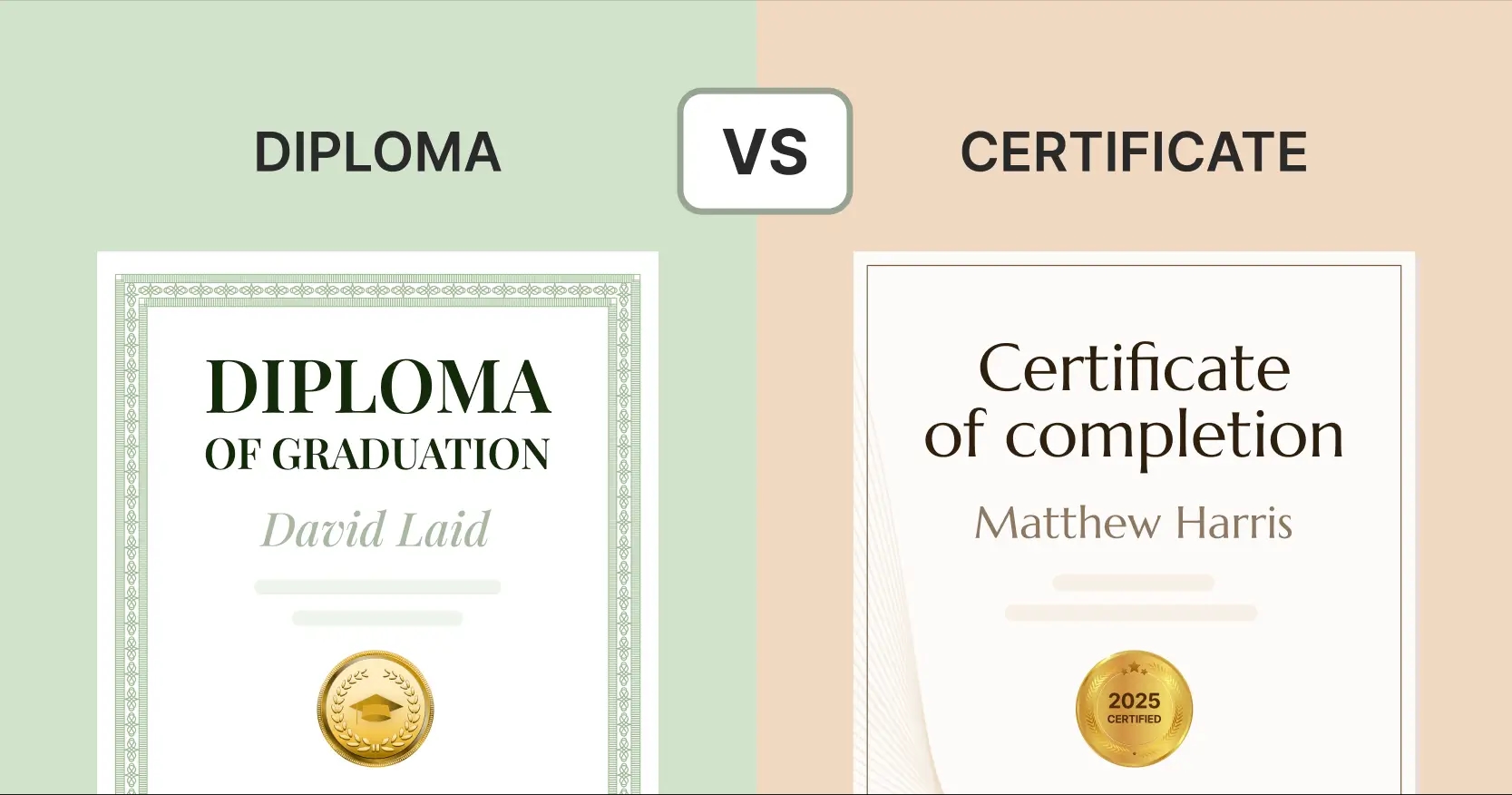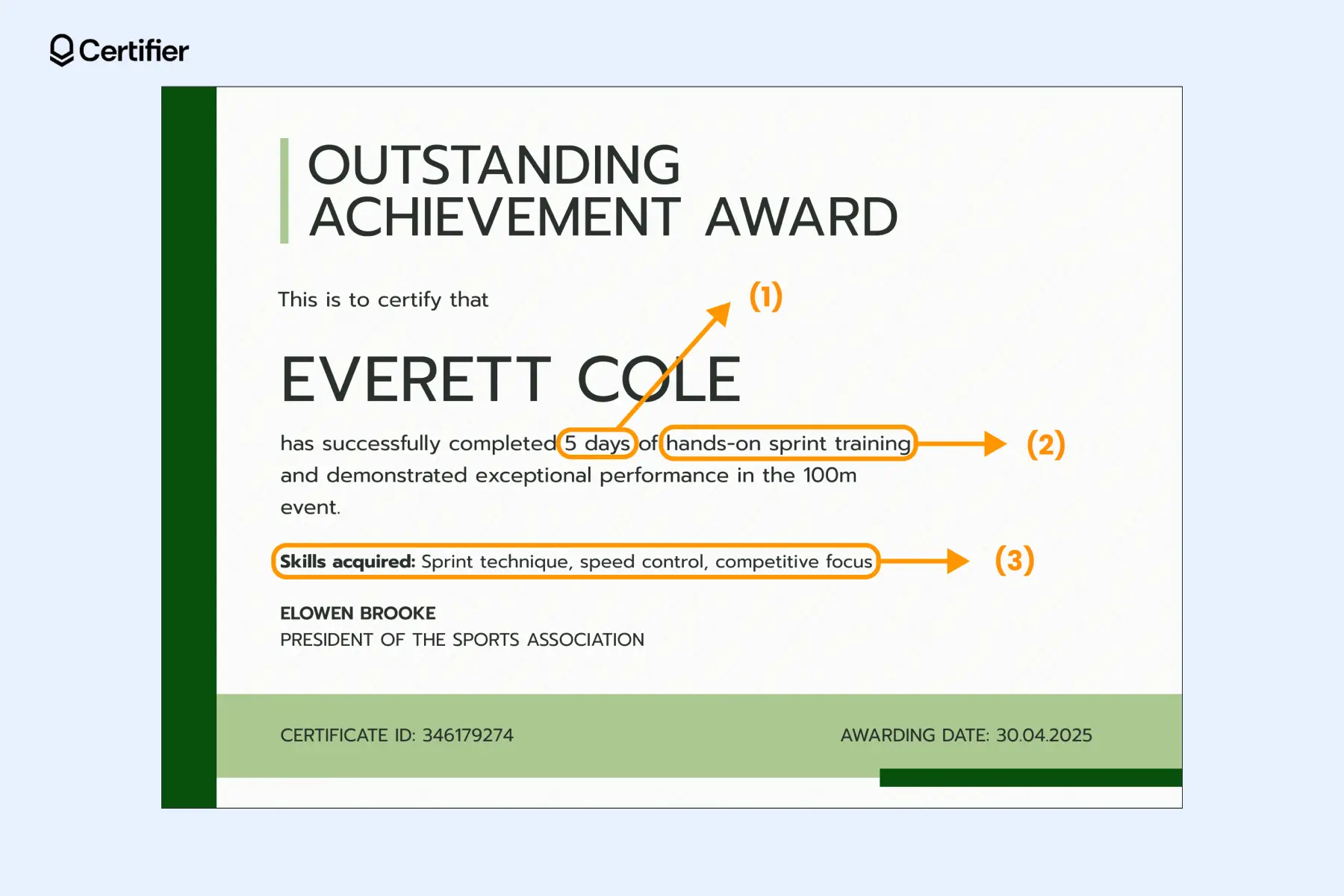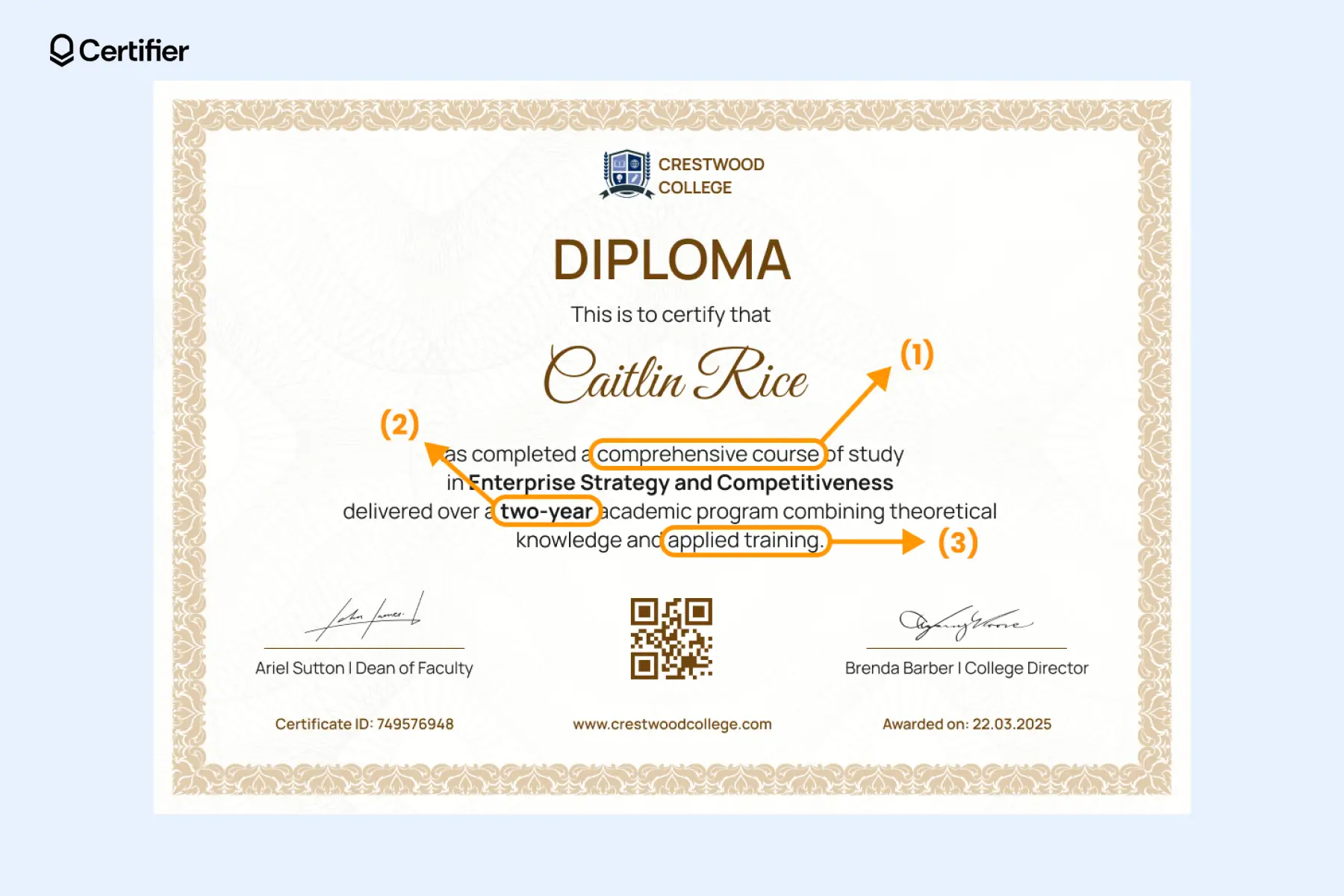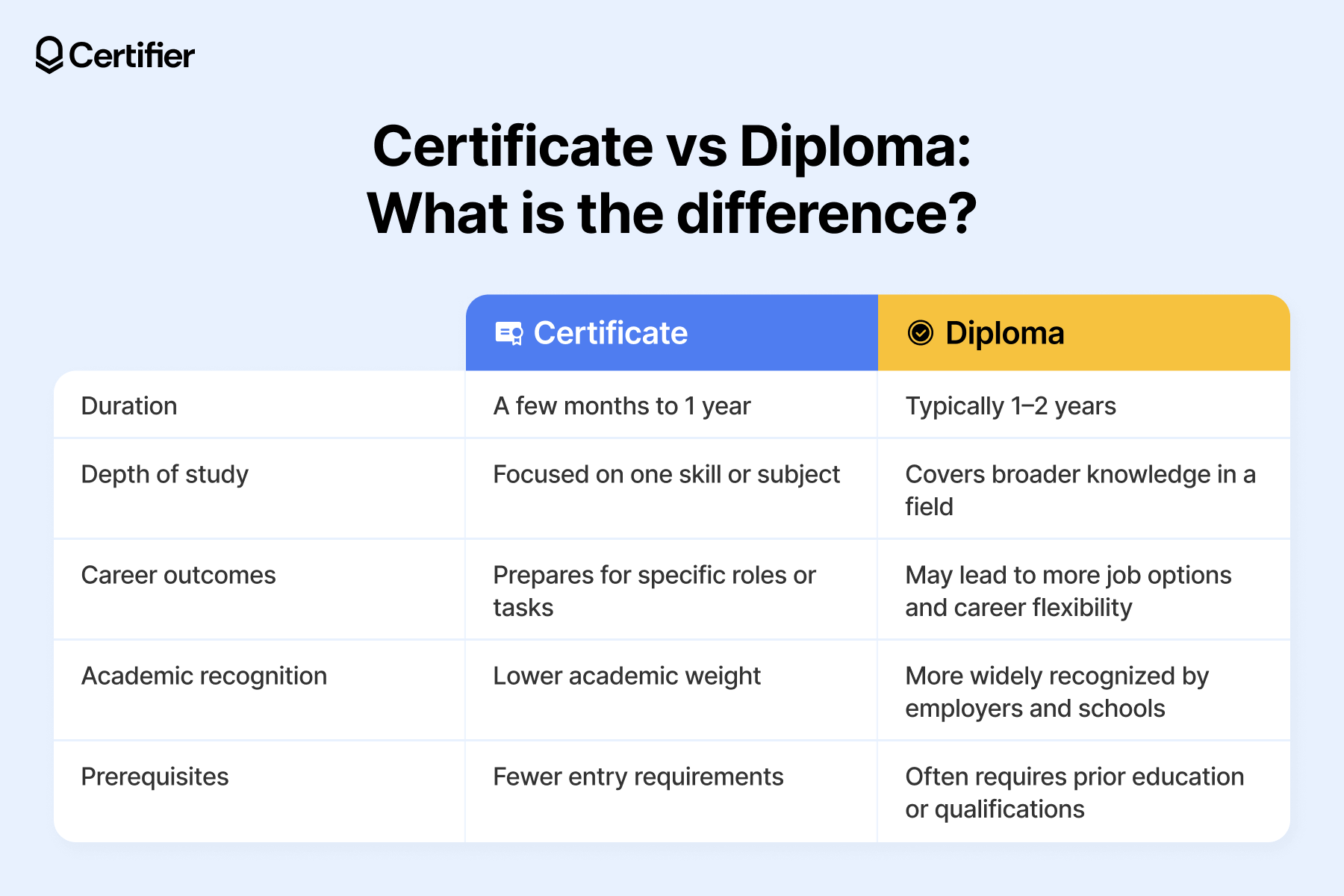Trusted by:
Certificate vs Diploma: What's the Difference?
Diploma vs certificate—which one is best for you? In this article, we explain what each credential means, how long it takes to earn and what kind of career path it supports. You will know whether a diploma or certificate fits your goals and timeline.
AuthorAksen Semak
Reviewer Sergey Butko
Verified Expert
Updated: June 24, 2025
16 min read

Author
Aksen Semak
Reviewer
Sergey Butko
Verified Expert
Updated: June 24, 2025
16 min read
Trusted by:
Not all credentials carry the same weight, especially diploma vs certificate.
You’ve seen both. Maybe you’ve earned one. But what do they actually stand for? What’s the difference in value, time and opportunity? And when does one make more sense than the other?
Today, we’ll go over definitions, examples, pros, cons and the kinds of jobs or skills each one leads to. Because if you’re planning to start a career, change paths or upskill fast, you should know exactly what you’re signing up for—whether that’s a graduation certificate, a diploma, or a shorter certificate program.
TL;DR: Diploma vs certificate
Many people wonder: is diploma a certificate? The short answer is no.
A certificate is a short-term, skill-specific credential typically earned in a few months to a year. A diploma is a document awarded after completing a more comprehensive educational program, usually lasting 1–2 years. Certificates focus on practical skills for specific jobs, whereas diplomas offer broader knowledge in a field of study.
Both have their pros and cons, with certificates being faster and more targeted and diplomas providing more in-depth education and potentially better job prospects.
Thinking about issuing certificates or diplomas? Meet Certifier. It’s a certificate editor that helps to generate and issue credentials at scale. Check out how to make digital certificate or diploma in just three steps using our editable templates. Just personalize the design once and generate the documents in bulk.
What’s a certificate?
A certificate focuses on specific skills or knowledge in a particular field. It's typically shorter in duration than a diploma, usually taking a few months to a year to complete.
Key features of certificates:
(1) Shorter duration
(2) Often includes hands-on training, but it’s optional
(3) Skill-specific training

Types of certificates
Certificates come in many forms, each designed for a different purpose:
Professional certificates—for industries that demand proof of excellence — for example CPA, CFA, RA. These signal you're a highly qualified professional in your field
Corporate certificates—created internally by companies for internal training or promotion
Product-specific certificates—got Salesforce skills? Mastered Google Analytics? These certificates of completion prove you're fluent in the tools that matter
Academic certificates—issued by universities and colleges, these are focused, curriculum-based and often shorter than full degree programs
Training certificates—awarded after workshops or short programs — great for signaling targeted skills or continuing education
Internship certificates—they validate the time, effort and learning that happens during internships, often with clear descriptions of tasks and achievements
Internship certificates—they validate the time, effort and learning that happens during internships, often with clear descriptions of tasks and achievements
Teaching certificates—specific to educators. Teaching certificate types include Initial, Conditional, Professional and more, depending on region and experience
Check out the Certifier’s ready-made certificate templates. They are all free to use, helping issue institutions generate, issue and send certificates in one go.
What’s a diploma?
A diploma is an official document awarded by an educational institution to certify that a student has successfully completed a specific course of study.
Compared to a certificate, a diploma is longer, deeper and broader. Diploma programs usually run one to three years and cover both technical skills and supporting knowledge. It's more comprehensive than a certificate but less extensive than a degree.
Whether you're heading into healthcare, business or tech, a university diploma sets you up with real-world knowledge and transferable skills.
Key features of diplomas:
(1) In-depth study of a subject area
(2) Longer duration than certificates
(3) Often includes hands-on training

Also, a diploma can serve as a bridge to a full degree or graduation certificate. If you’re designing one for your school or training program, check out this guide on how to write a diploma that feels just as official as the achievement behind it.
Types of diplomas
Here’s a quick breakdown of common types of diplomas:
High school diploma—awarded after completing grades 9–12. It's the standard for entering college or the workforce
GED (General Educational Development) diploma—a widely accepted alternative to a traditional high school diploma, earned by passing a series of standardized tests
Associate diploma—usually completed in two years at a community college or technical school. It combines career skills with academic study
Vocational or technical diploma—built for hands-on fields like mechanics, cosmetology, culinary arts and trades. These diplomas are practical and job-focused
Curious what a diploma looks like in practice? Browse our collection of free diploma templates to see real examples from schools and training programs.
Honors diploma—a standard diploma with extra credit. Awarded to students who meet advanced academic requirements like higher GPAs or AP/IB coursework
International Baccalaureate (IB) diploma—globally recognized and rigorous. Designed for high-achieving students looking to study internationally or build a competitive university application
Undergraduate degree diploma—awarded upon completion of a bachelor's degree program at a college or university. This typically takes four years of full-time study and represents a comprehensive education in a specific field of study
Not all diplomas are earned — some are made to look like they are. Whether you're an employer, school or credential issuer, it’s essential to know how to verify authenticity. From seal placement to font inconsistencies, there are clear red flags to watch for.
Read our full guide on how to identify a fake diploma and protect your institution or brand from credential fraud.
What’s the difference between diploma and certificate?
The main differences between certificates and diplomas lie in their duration, depth of study and career outcomes:
Duration. Certificates typically take a few months to a year, while diplomas usually require 1-2 years of study.
Depth of study. Certificates focus on specific skills, whereas diplomas offer a broader understanding of a field.
Career outcomes. Certificates prepare for specific jobs or skills, while diplomas can lead to more diverse career options.
Academic recognition. Diplomas generally carry more academic weight and may be more recognized by employers when compared to certificates.
Prerequisites. Diplomas often have more stringent entry requirements compared to certificates.

Use case comparison: certificate or diploma?
The diploma vs certificate conversation goes deeper when looking at real-world use cases. Whether choosing a certificate program or committing to a full diploma program, the difference between diploma and certificate comes down to depth, duration and career alignment.
Certificate of proficiency vs diploma
A certificate of proficiency typically validates a specific skill or knowledge area but isn’t always tied to a formal academic program. It’s ideal for showcasing competence in a narrow field.
A diploma, on the other hand, is a structured academic credential that includes both technical skills and broader subject matter, usually completed over one to two years.
Technical diploma vs certificate
A certificate offers quicker, more targeted training—often completed in a few months—and skips the broader coursework.
A technical diploma involves hands-on training in fields like HVAC, mechanics or IT and often includes general education courses. These programs run up to two years
Graduate certificate vs diploma
A graduate certificate is a short, specialized program (typically six months) at the master's level.
A graduate diploma goes further, usually requiring a full year of study. It offers deeper subject matter expertise and is often a step toward a full graduate degree.
Professional certificate vs diploma
A professional certificate is industry-focused and designed to prove expertise in specific tools, platforms or methodologies — such as project management or digital marketing.
A diploma covers the broader context and usually includes practical training over one to two years, preparing graduates for ongoing roles or further education.
Undergraduate certificate vs diploma
An undergraduate certificate is a short university-level credential, typically consisting of four subjects.
A diploma is a standalone qualification that prepares students for specific careers and may act as a bridge to a bachelor's degree.
Career diploma vs certificate
A career studies certificate is shorter—between 9 and 29 credit hours—and designed for rapid workforce entry without the extra coursework.
A career diploma often includes 60–72 credit hours and blends career training with general education.
Cosmetology diploma vs certificate
A cosmetology certificate focuses on core skills like hair styling, skincare and safety. It’s typically faster but may not meet licensing requirements depending on the state.
A cosmetology diploma may cover broader content such as anatomy, chemistry and salon management and often takes longer to complete.
HVAC diploma vs certificate
An HVAC certificate program lasts six to twelve months and covers the technical basics—ideal for quick entry into the field.
An HVAC diploma includes more comprehensive training and often integrates general education topics like math or physics.
Is a diploma a certificate?
No. A diploma is not a certificate. Both validate learning, but the difference between diploma and certificate is significant.
Diplomas are typically part of a formal academic structure, offering a well-rounded education and longer training period.
Certificates are faster, more focused and designed to teach specific skills without the general education component.
If you're deciding between a diploma or certificate, consider your goals. Need quick upskilling for a specific job? A certificate program might be enough. Looking for a stronger foundation or planning to earn a bachelor's degree later? A diploma program is likely the better fit.
What are the pros and cons of a certificate and diploma?
Both certificates and diplomas can help you grow, but they work in different ways. Here’s a quick look at the pros and cons of each.
Certificate pros
Fast track to employment
Lower cost
Highly focused
Certificate cons
Limited in scope
Fewer long-term career options
Diploma pros
Broader career access
More respected by employers
Sets you up for further study
Diploma cons
More expensive
Longer to complete
When weighing diploma vs certificate, ask yourself: Am I looking to start fast or build strong? Mind that one doesn’t eliminate the other — many students begin with a certificate to gain quick skills, then pursue a diploma later to deepen their knowledge and open more career doors.
Diploma versus certificate: job opportunities
Some paths lead straight to a job. Others build a wider base of knowledge. When comparing diploma vs certificate options, it helps to look at what roles each one prepares you for — and what skills they teach along the way.
Diploma jobs
These roles often need a complete skill set and a broader view of the field:
Business: office manager, HR coordinator
Healthcare: medical assistant, practical nurse
Technology: network technician, systems analyst
Certificate skills
Quick-hit skills that make you job-ready for specific roles:
Digital marketing tools
Web development languages
Graphic design software
Medical billing systems
You don’t have to pick one forever. Many start with a certificate, then layer on a diploma later.
What do YOU choose: certificate or diploma?
Comparing a diploma versus certificate has nothing to do with which is better. It’s about which one’s better for you. Choose the tool that matches the job you're chasing. Because in the end, credentials don’t just hang on a wall. They give opportunities and verify earned skills.
If you’re ready to create and manage certificates or diplomas for your own program, sign up for Certifier and start issuing credentials in minutes.
FAQ: diploma versus certificate
If you want to know more about certificate or diploma program, go through the most frequently asked question on that topic.

Aksen Semak
With 7+ years in digital marketing and SEO, Aksen has produced marketing projects for global brands (Google For Startups, Microsoft), retail companies (Żabka Group, Carrefour Foundation), B2B SaaS startups (Roomzilla, CallPage) and universities (Merito Universities Group, Lazarski University). Today, as the Head of Marketing at Certifier, he connects product innovation with the people who need it most, ensuring digital credentialing is positioned as a real solution rather than a buzzword.
Aksen leads global campaigns, lead generation, and market expansion—initiatives that put Certifier on the map and keep it growing. His focus is simple: help training providers, educators, and organizations worldwide understand Certifier’s value and trust it.
Aksen Semak
With 7+ years in digital marketing and SEO, Aksen has produced marketing projects for global brands (Google For Startups, Microsoft), retail companies (Żabka Group, Carrefour Foundation), B2B SaaS startups (Roomzilla, CallPage) and universities (Merito Universities Group, Lazarski University). Today, as the Head of Marketing at Certifier, he connects product innovation with the people who need it most, ensuring digital credentialing is positioned as a real solution rather than a buzzword.
Aksen leads global campaigns, lead generation, and market expansion—initiatives that put Certifier on the map and keep it growing. His focus is simple: help training providers, educators, and organizations worldwide understand Certifier’s value and trust it.
Share this article